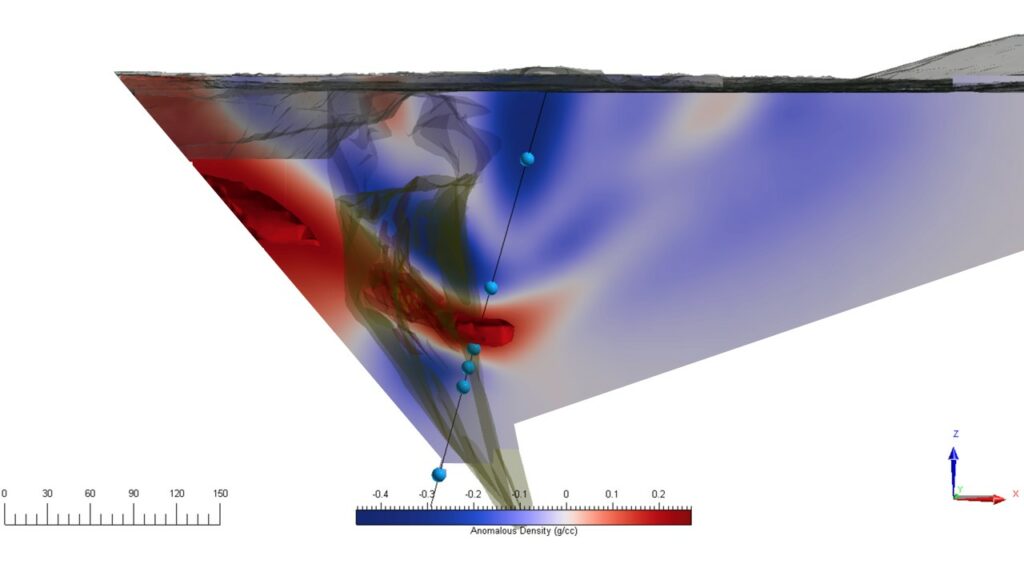April 24, 2023

Muon Tomography for High-Grade Uranium Deposits
The world’s first borehole muon tomography field trial successfully imaging alteration surrounding compact uranium ore pods.

McClean Lake
PROJECT
Athabasca Basin, Canada
LOCATION
Borehole
IDEON DETECTOR TYPE
Unconformity-related uranium
DEPOSIT TYPE
This trial of borehole muon tomography demonstrated the effectiveness of the technique to image low-grade mineralization and alteration surrounding high-grade compact uranium deposits. Outcomes matched the existing geological model, delineating structural trends and mapping broad alterations surrounding uranium mineralization. Minor variations in density (in the range of 0.1 – 0.2 g/cc) within the alteration zone correlated spatially with the known mineralization halo.
BACKGROUND
McClean Lake is located within the eastern part of the Athabasca Basin in northern Saskatchewan, 850 kilometres north of Saskatoon. Orano’s McClean Lake operations include the world’s most technologically advanced uranium mill for the processing of undiluted, high-grade uranium ore. The Sue deposits, one of which was the site of this trial, are situated along the western margin of the Archean Collins Bay granitic dome within a graphitic pelitic gneiss corridor known as the Sue Trend. The uranium mineralization in this area is mainly composed of uraninite as nodules, shear vein fillings, and veinlets.
IDEON SOLUTION
This project followed on an earlier successful field trial conducted at McArthur River, SK using Ideon’s large-format muon detectors positioned in underground drifts at 600m depth. When development on the borehole-format detectors was completed in spring 2021, the first prototype units were deployed at McClean Lake. Six borehole detectors were positioned in a chain at multiple points down a single drillhole 300m deep. Two of the six sensors were positioned above the known deposit to map (and eliminate) near-surface geological complexity. Ideon staff traveled to the site to deploy the detectors. Data were gathered over a period of about 7 months (with some inefficiencies due to power outages), with data collection completed in January 2023. Data intake and analysis were conducted remotely throughout this period to verify quality and calibration.
McClean Lake Case Study Walkthrough
Watch Ideon CTO and Co-founder, Doug Schouten, provide an in-depth review of the McClean Lake program and results.
